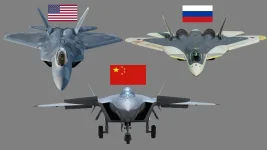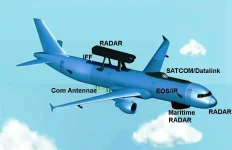- Views: 2K
- Replies: 12

The Aviation Industry Corporation of China (AVIC) has sent ripples through the global defense community with the unveiling of its "Baidi B-Type" aerospace fighter concept. This futuristic design, part of China's ambitious "Nantianmen Project," offers a glimpse into AVIC's vision for a 6th-generation fighter jet that pushes the boundaries of aerospace technology.
The Baidi B-Type, a dual-mission variant designed for both air-to-air and air-to-ground combat, boasts a range of innovative features. A redesigned rear fuselage optimizes aerodynamics and significantly increases internal weapons bay capacity, allowing for a wider array of munitions. Upgrades to the avionics suite enhance sensor fusion, situational awareness, and electronic warfare capabilities, preparing the aircraft for networked combat scenarios.
AVIC has also prioritized pilot comfort and efficiency. The redesigned cockpit promises improved ergonomics and intuitive controls, reducing pilot fatigue during complex missions. Streamlined maintenance procedures and enhanced deployment capabilities aim to maximize the fighter's operational availability.
The "Nantianmen Project," meaning "South Heaven Gate," underscores China's aspirations for air and space supremacy. The project focuses on developing next-generation platforms with high-speed capabilities, modular weapon configurations, and extended operational ranges that could potentially allow the Baidi B-Type to engage targets in near-space environments.
While still a concept, the Baidi B-Type's unveiling signals China's intent to compete with the United States, Russia, and other leading nations in advanced fighter technology. If realized, the Baidi B-Type could significantly enhance China's air combat capabilities and power projection.
The development also highlights the intensifying global race for 6th-generation fighter jet technology, characterized by AI-driven avionics, hypersonic capabilities, and multi-role flexibility. Although operational deployment is likely years away, the Baidi B-Type demonstrates China's determination to be a frontrunner in this critical domain.





